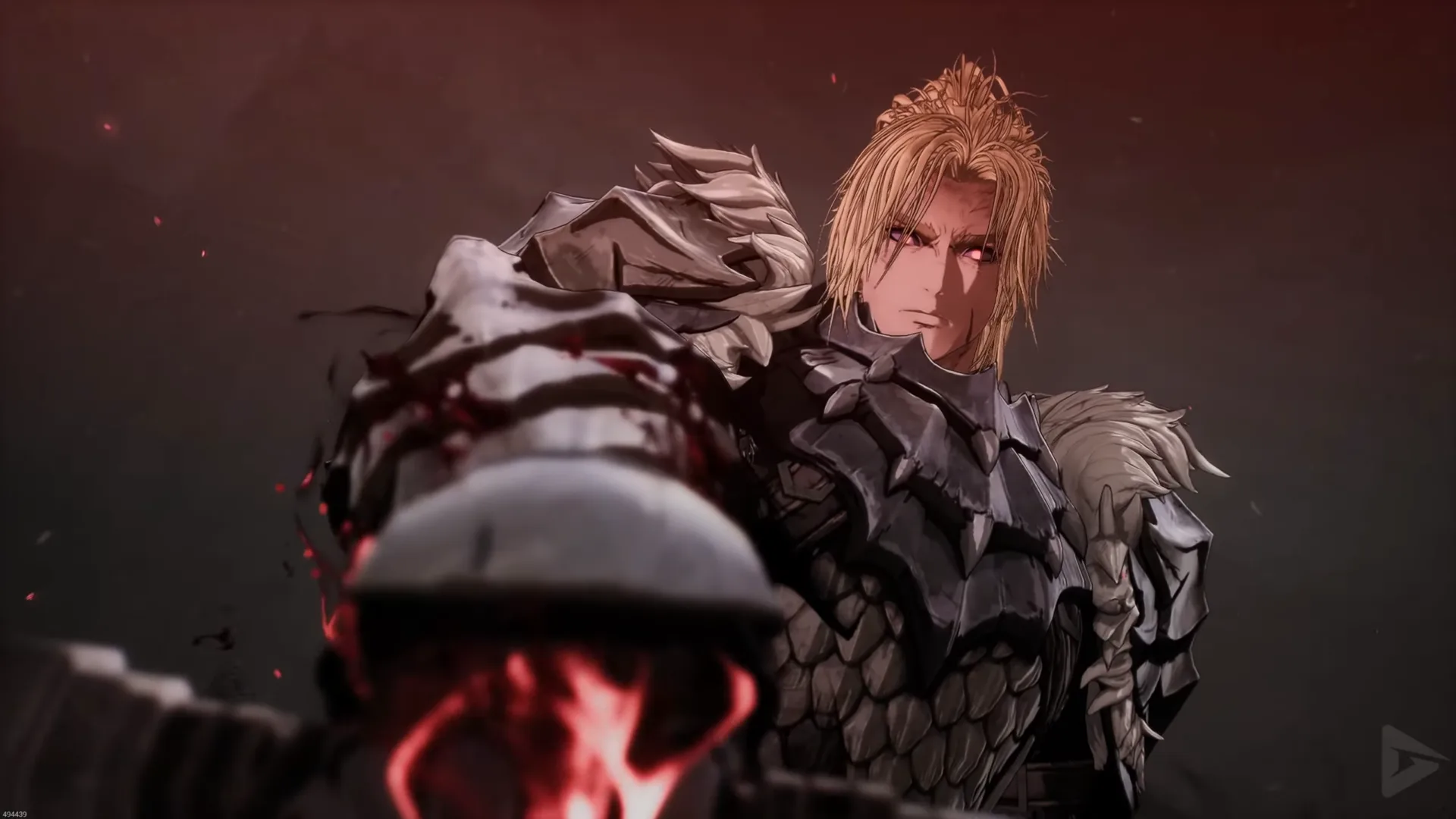Nexon’s The First Berserker: Kazan is a bold entry into the single-player action RPG space, blending Soulslike difficulty with lightning-fast combat. Set in the Dungeon and Fighter universe, this game delivers a punishing yet rewarding gameplay loop, engaging storytelling, and some of the most fluid combat mechanics in the genre. But does it live up to the hype generated by its demo? Now, Nexon is a Korean publisher that’s known for Gacha Games. Their first try at a Soulslike is something none of us expected. Wonder why? Let’s dive in.
The First Berserker Khazan — Review Summary
The First Berserker Khazan is an aRPG with a crisp cel-shaded art style that doesn’t get too obnoxious. The visuals blend well with the gritty environment and atmosphere. Every level boasts an end-level boss that kicks you down. But The First Berseker: Khazan, doesn’t leave you hanging. Instead, the rewarding gameplay loop inches you with rewards for encountering enemies and bosses, allowing you to level up with each try. Combat and boss fights are buttery smooth that goes part and parcel with the punishing, yet equally rewarding combat.
Pros:
✅ Incredibly fluid and rewarding combat
✅ Challenging yet fair bosses
✅ Engaging revenge-driven story
✅ Beautiful cel-shaded art style
✅ Solid performance and voice acting
Cons:
❌ Character development is underwhelming
❌ Limited build variety reduces replayability
❌ Some levels feel too inspired by other games
A Decent Soulslike Revenge Story

You play as Kazan, a warrior of the Pelos Empire who, alongside his best friend Osma, defeated the berserk dragon Hisar. However, their heroic rise sparked envy from the emperor, leading to their betrayal. Kazan was brutally tortured and exiled, only to be saved by an avalanche that brought him face-to-face with the Blade Phantom—a mysterious entity that merges with him, granting supernatural power in exchange for an unknown price.
The narrative thrives on this dynamic. Kazan and the Blade Phantom are polar opposites—one driven by heroism, the other by cold detachment—creating a compelling internal struggle. However, while the story remains gripping throughout, character development takes a backseat. Kazan and the Blade Phantom remain largely static, and side characters who show potential are often sidelined. That said, the world building is top-notch, introducing powerful dragons, Seno Temple monks, giant Yeti creatures, and an underworld hierarchy that plays a crucial role in the game’s deeper lore.
A unique addition is the character relationship map, accessible at any Blade Nexus, which tracks allegiances and backstories as you progress. It’s a great touch for those who love diving into lore.
A Unique Take on Soulslike Level Design

The First Berserker: Kazan follows a structured hub-and-mission format. The Crevice, an ethereal space between the mortal realm and Neor, serves as your base, similar to the Nexus from Demon’s Souls. Here, you select missions from the Phantom Gate, each with level recommendations, objectives, and collectibles.
Initially, level design feels linear, but it gradually expands with verticality, hidden paths, and challenging enemy placements. The game heavily borrows from Soulslike classics—there’s a burning village reminiscent of Nioh, a fortress inspired by Sen’s Fortress in Dark Souls, and even a signature poison swamp. While the influences are clear, the execution is solid, creating a mix of familiarity and fresh challenge.
Brutal Combat With a Hack-and-Slash Twist

Combat is where The First Berserker: Kazan truly shines. It takes the precision of Soulslike combat and injects the speed of a hack-and-slash, feeling almost like Devil May Cry meets Sekiro. The game rewards aggression, but patience is key—bosses will punish reckless play.
Each weapon offers a distinct playstyle:
- Dual Wield – Fast and nimble but low range.
- Greatsword – Heavy-hitting with defensive capabilities.
- Spear – Long reach with devastating multi-hit combos.
The skill tree allows deep customization, letting you weave special moves into combos, charge up powerful strikes, and fine-tune your build. The Spirit system adds another layer, requiring you to build up energy through combat before unleashing devastating attacks.
Bosses are a highlight—relentless, challenging, and requiring mastery of parries and dodges. What sets Kazan apart is that you always receive a gameplay reward for defeating bosses, keeping the grind satisfying and progression meaningful.
Customization and Replayability

While the game offers satisfying build diversity, customization is somewhat limited. Gear revolves around set bonuses, meaning mix-and-matching is possible, but not as flexible as other ARPGs. Phantom equipping adds some strategic depth, but replayability takes a hit due to limited build variety.
However, New Game Plus provides additional loot and new challenges, making at least a second playthrough worthwhile.
Visuals, Performance, and Sound Design

The game opts for a bold cel-shaded aesthetic, emphasizing black and red tones that fit its dark revenge theme. While the art style is fantastic, some environments feel washed out.
Performance-wise, it runs flawlessly—90 FPS at max settings (RTX 3090, Ryzen 9 5950X) with only minor dips in the final missions. The soundtrack is solid but doesn’t reach the highs of Lies of P or Stellar Blade. However, the English voice acting is exceptional, featuring talents like Anthony Howell (Elden Ring’s Margit) and Ben Starr (Final Fantasy 16’s Clive Rosfield).
Verdict – A Soulslike That Stands Tall

The First Berserker: Kazan delivers a powerful Soulslike punch, going a step further with its incredibly fluid gameplay. While the story has some shortcomings, the exhilarating combat and satisfying boss encounters make it one of the best action RPGs in recent years.
For $59.99, this game is absolutely worth it, especially if you’re a fan of punishing but rewarding action RPGs. If this is Neople’s first attempt at a Soulslike, the future looks incredibly promising.
